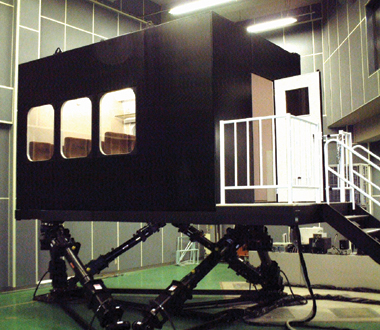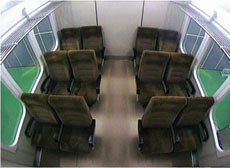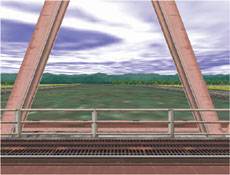| 2. On-board Comfort Simulator | ||||||
|
On-board comfort is affected by a variety of factors including vibration, noise, temperature, illumination, and views from the window. However, although each of these factors has been studied individually, almost no progress has been made in the study of mutual effects of combined factors and the evaluation techniques of overall comfort. A car comfort simulator was therefore developed to enable experimental studies of comfort evaluation techniques (Fig.1). The simulator can freely reproduce approximately eight times the vibratory acceleration normally generated in passenger space, and up to twice the acceleration/deceleration and centrifugal acceleration. Passenger window scenes can also be generated in real time using a projector set up outside the window. Real and virtual vehicles and sections created arbitrarily can be reproduced as experimental conditions using vehicle data, track line forms and run curves. This simulator can also reproduce the same stimulus conditions repeatedly, control multiple stimulus conditions independently, and make synchronous measurements of psychological and physiological indexes such as the heartbeat and breathing of the subject. The simulator will be used for research and development to help improve comfort, evaluating factors such as comfort in a complex environment of noise and vibration, vehicle vibration effects on walking safety, and the effects of instantaneous vibration and body rolling motion on riding comfort. This study was sponsored by the Ministry of Land, Infrastructure and Transport.
| ||||||


